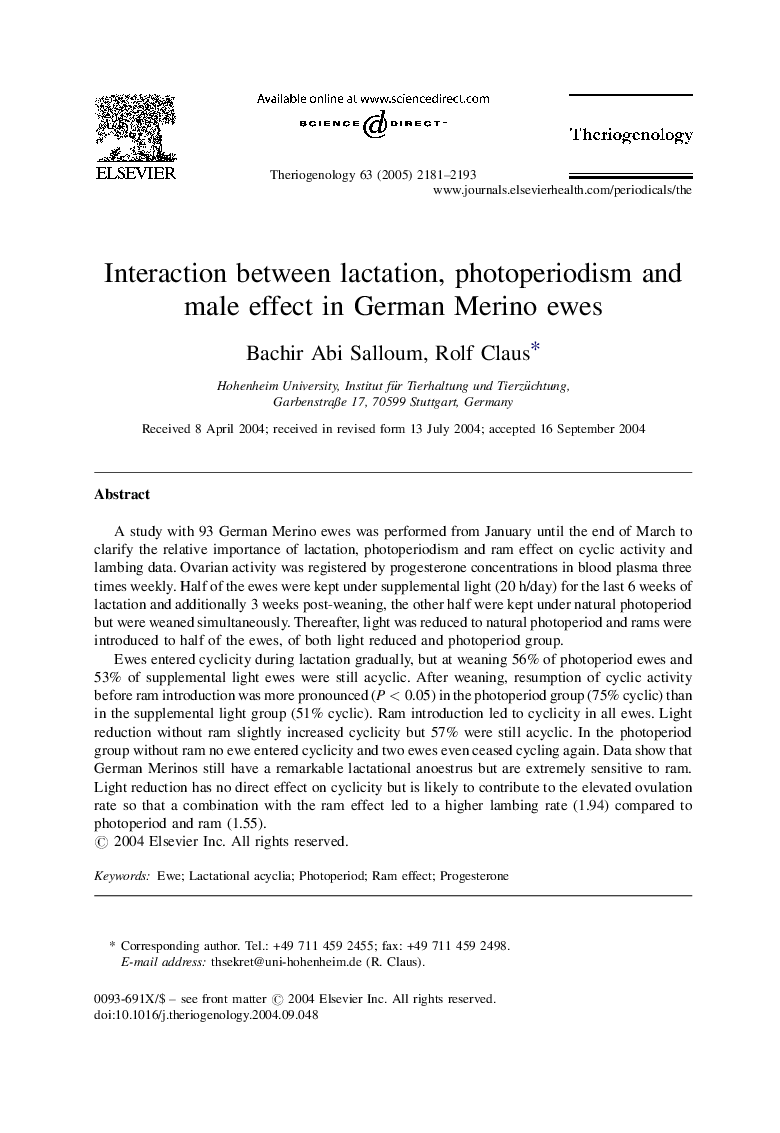| Article ID | Journal | Published Year | Pages | File Type |
|---|---|---|---|---|
| 2096994 | Theriogenology | 2005 | 13 Pages |
A study with 93 German Merino ewes was performed from January until the end of March to clarify the relative importance of lactation, photoperiodism and ram effect on cyclic activity and lambing data. Ovarian activity was registered by progesterone concentrations in blood plasma three times weekly. Half of the ewes were kept under supplemental light (20 h/day) for the last 6 weeks of lactation and additionally 3 weeks post-weaning, the other half were kept under natural photoperiod but were weaned simultaneously. Thereafter, light was reduced to natural photoperiod and rams were introduced to half of the ewes, of both light reduced and photoperiod group.Ewes entered cyclicity during lactation gradually, but at weaning 56% of photoperiod ewes and 53% of supplemental light ewes were still acyclic. After weaning, resumption of cyclic activity before ram introduction was more pronounced (P < 0.05) in the photoperiod group (75% cyclic) than in the supplemental light group (51% cyclic). Ram introduction led to cyclicity in all ewes. Light reduction without ram slightly increased cyclicity but 57% were still acyclic. In the photoperiod group without ram no ewe entered cyclicity and two ewes even ceased cycling again. Data show that German Merinos still have a remarkable lactational anoestrus but are extremely sensitive to ram. Light reduction has no direct effect on cyclicity but is likely to contribute to the elevated ovulation rate so that a combination with the ram effect led to a higher lambing rate (1.94) compared to photoperiod and ram (1.55).
